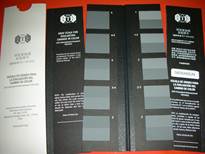Purpose of Test
The accelerated laundering test evaluates how textile’s color will fade under given laundering circumstances. This test will provide a measurement of the colorfastness of textile to laundering, which is expected to resist frequent washing. The test roughly lasts for 45 minutes but is designed to estimate performance over the life of a textile.
The loss of fabric color and surface changes result from detergent solution and abrasive activity of 5 hand or home washings, with or without chlorine.
Initially, this test method was intended to evaluate color change and staining through 5 home or commercial washing on an accelerated basis.
Over the years, commercial laundering processes changed through the additional procedures that rely on different fabric types. This resulted in not having a standard system for one accelerated procedure.
The acceleration used in the test is defined by:
- Higher temperature
- Low liquor ratio
Terminology Defined
Colorfastness – Colorfastness is a fabric’s ability to retain color in various conditions.
Laundering – Removal of stains or dirt from fabric by washing with a detergent solution.
Gray Scale for Staining – The Gray Scale for Staining is used in colorfastness tests for evaluating staining on undyed textiles. The scale has shades of gray correlated with numbers that allow a tester to match shades with a numerical score.

Test Method
Materials Used for Test
- Automatic washing machine
- Automatic tumbler dryer
- Drip dry and line dry facilities
- AATCC Standard Reference Detergent
- Test specimen
- Gray Scale for Staining
- Gray Scale for Color Change

Testing Procedure
The test specimens are tested under particular conditions of temperature, detergent solution bleach, and abrasiveness of laundering. The test is evaluated by the color change relatively similar to that occurring in 5 hand and home launderings.
Test Procedure (Summary)
Part 1: Preparation of test specimen: The fabrics are cut for preparation for laundering. One unwashed piece will be set aside for comparison after the test. The laundry method will also be identified.
Part 2: Laundering: The AATCC Standard Reference Detergent is added to the wash. The specimen will be put in the wash. The washer is set for a particular cycle and time. After the last spin cycle, the fabrics are removed from the washer.
Part 3: Drying with a dryer: The test specimens are put in a tumble dryer at the recommended setting from the care instructions. Over drying should be avoided.
Part 4: Drying by line or drip: If drying by drip or line, the fabrics must be hung in a vertical direction to allow drying at air and room temperature.
Part 5: Drying with a screen: To dry with a screen, the test specimen is laid on a horizontal screen. The wrinkles must be removed without stretching the material. It should dry at air and room temperature.
Part 6: Completion of wash and dry cycles: The test specimens must complete the five wash and dry cycles by repeating the washing and drying procedures. Condition the textiles in a standard atmosphere for a minimum of 4 hours before evaluation.
Part 7: Evaluation: Color loss is evaluated by placing the washed and unwashed textiles side by side. The Gray Scale for Color Change is used for the assessment.